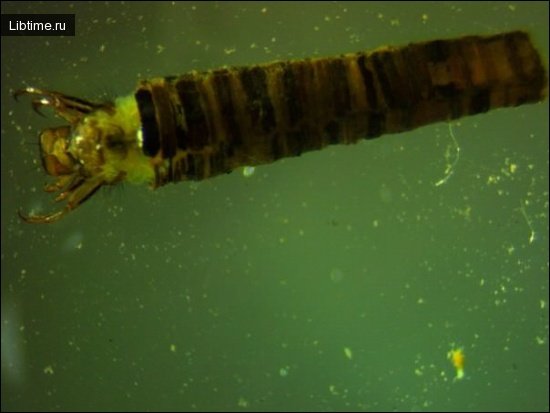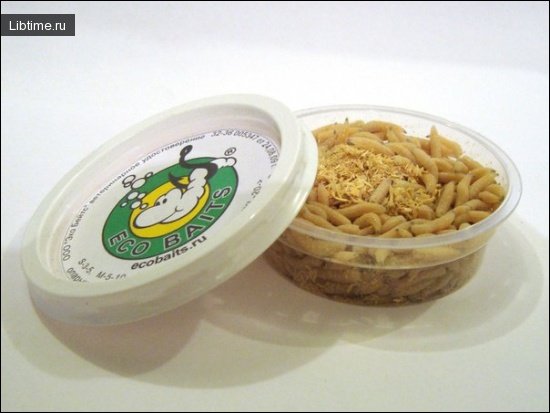Enemies of fish
What are the main enemies of fish in freshwater bodies?
Enemies of fish are insects
The enemies of fish are insects, as well as other inhabitants of water bodies. Most insects are aquatic bugs - predators.
- the fringed buzzard,
- thebuzzard beetle,
- the skimmer beetle,
- water bugs,
- dragonfly larvae,
- other enemies of fish
Fringed floater

Of these beetles, the most damaging to fish juveniles is the fringed floater - large, up to 30 millimeters, dark green with a yellow-cream ribbon edging its back.
Floater beetle

The floater beetle is an excellent swimmer, with its rear pair of legs turned into paddles. It breathes atmospheric air by exposing the back of its abdomen, where the blowholes are located. In rivers, sometimes there is a larger beetle, the broad beetle (up to 40 mm long, 25 - 27 mm wide). These beetles are predators, grabbing everything they come across.
But the most terrible disaster for young fish are their larvae. The larvae of floater beetles is a body of nine segments with a round, flat head, equipped with two sickle-shaped jaws. After a series of molts, the larva reaches a length of 6 centimeters.
It usually hangs near the surface of the water, exposing the posterior end of the body with a blowhole. It swims with the help of all six legs, but can move quickly with powerful leaps. In the jaws are channels through which the larva injects into the victim paralyzing poison and digestive enzymes, under the influence of which liquefy the tissues of the prey.
Having thrust its jaws into the fish, the larva rises to the surface and sucks the victim, only occasionally moving its jaws. If a larger fish manages to escape, it dies from the poison. The voracity of the larvae is phenomenal, in an experiment they eat more than 100 fish fry in a day. Be careful! The bite of the larvae of the swimmer is very painful.
Skomoroch

In the southern regions of the country in freshwater bodies the enemy of fish is the skomorokh beetle, which is the same size as the swimmer's beetle, but has a number of differences. This beetle is a subject of disputes between scientists and fish breeders. Some consider it a terrible pest, others deny that it harms fish.
It is easy to distinguish it from the swimmer beetle: the sizes are the same, but the body of the skomoroch when viewed from the side is flat, and in the swimmer beetle - as if humped; coloration emerald-green, in the sun it seems as if the back burns green grains, the abdomen is light cream (in the swimmer beetle dark).
The spiracle is small, in the form of a trapezoid (in the floater it is large), the legs-shafts are densely dotted with hairs, the beetle spreads them apart when breathing near the surface (in the floater the legs have sparser hairs, the ends of the legs curve over the back). All swimmer bugs can pinch hard with their jaws, and secrete a murky protective fluid with a bad odor.
Water bugs
The second group of pests are water bugs: the swimmerbug, gladysh, water scorpion, and ranatra. The bugs suck their victims with their proboscis. Gladysh, plavt - excellent swimmers (gladysh swims on its back).

Scorpion lies on the leaves, in the tina (it is flat).
And the Ranatra is stick-like, holding on to the stems of plants.
These bugs hunt from ambush. Scorpions and Ranatra have the front pair of legs turned into grasping tools. Plautus and Gladyschus chase their victims, the front legs of the plautus are also turned into grasping implements. Bugs bite strongly, especially stings painfully stinging trunk gladysh.
In reservoirs there is a bug coryxa, smaller than its brethren, but it sings beautifully, the song can be heard from under the water. Some species of coryxa feed on plant food, but there are also predators. Coryxa are less harmful to fish farming than the four larger bugs and their larvae.
Dragonfly larvae

The third group is dragonfly larvae. The larvae of the dragonfly reaches a length of 6 centimeters, the others are smaller. The terrible weapon of dragonfly larvae is the so-called mask, a special lever device that covers the head and mouth from below. This lever flies 1.5 centimeters or more forward from the head.
The brown larva (sometimes even grows algae) sits motionless on plants and suddenly throws out the mask, grabs a fry, pulls it up to its mouth. Small larvae of dragonfly larvae grab very small fish, and more harmful, acting as food competitors. Bottom larvae strain small animals from the ground through the mask-bucket - so, too, food competitors of fish.
Dragonfly larvae are safe for humans, although the dragonfly can bend and painfully prick your finger with spines located at the very end of the body. Lyutki swim slowly, wriggling long body, bottom larvae are more running, but can jump with the help of reactive force, larvae koromyslova swiftly carried in the water, taking in the rectum of water and forcefully ejecting it - a real rocket.
Other enemies of fish
Other enemies of fish should include:
- frogs,
- and, to a lesser extent, newts - of the amphibians,
- eels and aquatic turtles from the reptiles,
- a number of birds (grebes, herons, ducks, gulls),
- mammals such as coutoras, mink and otters.


